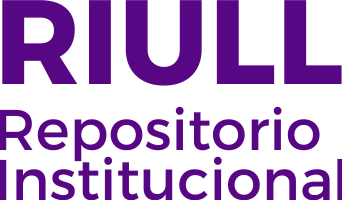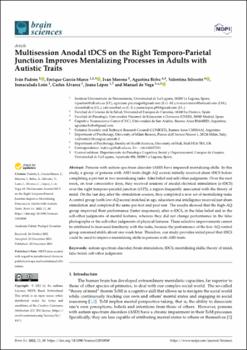Multisession Anodal tDCS on the Right Temporo-Parietal Junction Improves Mentalizing Processes in Adults with Autistic Traits
Date
2021Abstract
Persons with autism spectrum disorder (ASD) have impaired mentalizing skills. In this
study, a group of persons with ASD traits (high-AQ scores) initially received sham tDCS before
completing a pre-test in two mentalizing tasks: false belief and self-other judgments. Over the next
week, on four consecutive days, they received sessions of anodal electrical stimulation (a-tDCS)
over the right temporo-parietal junction (rTPJ), a region frequently associated with the theory of
mind. On the last day, after the stimulation session, they completed a new set of mentalizing tasks.
A control group (with low-AQ scores) matched in age, education and intelligence received just sham
stimulation and completed the same pre-test and post-test. The results showed that the high-AQ
group improved their performance (faster responses), after a-tDCS, in the false belief and in the
self-other judgments of mental features, whereas they did not change performance in the false
photographs or the self-other judgments of physical features. These selective improvements cannot
be attributed to increased familiarity with the tasks, because the performance of the low-AQ control
group remained stable about one week later. Therefore, our study provides initial proof that tDCS
could be used to improve mentalizing skills in persons with ASD traits





